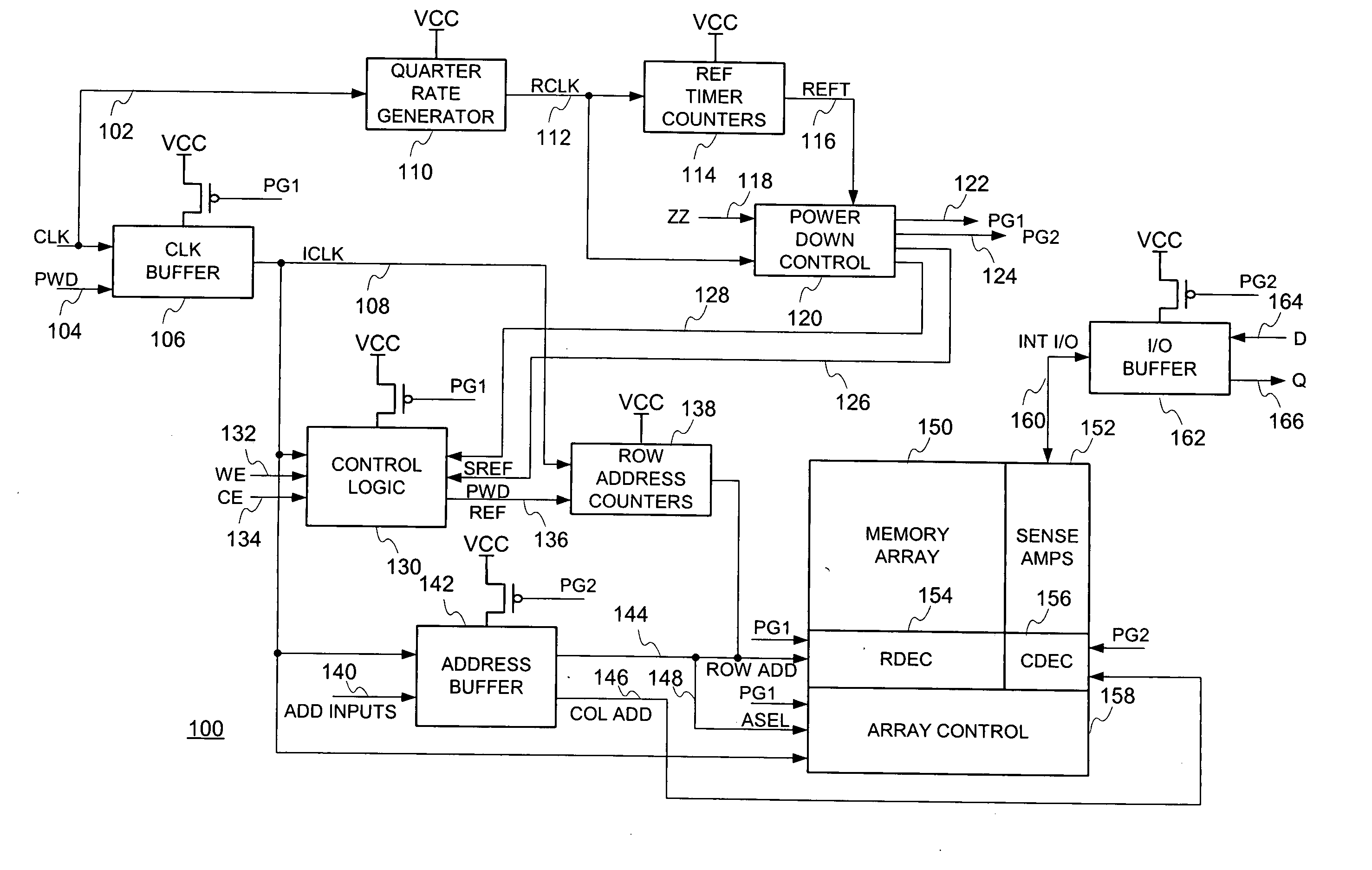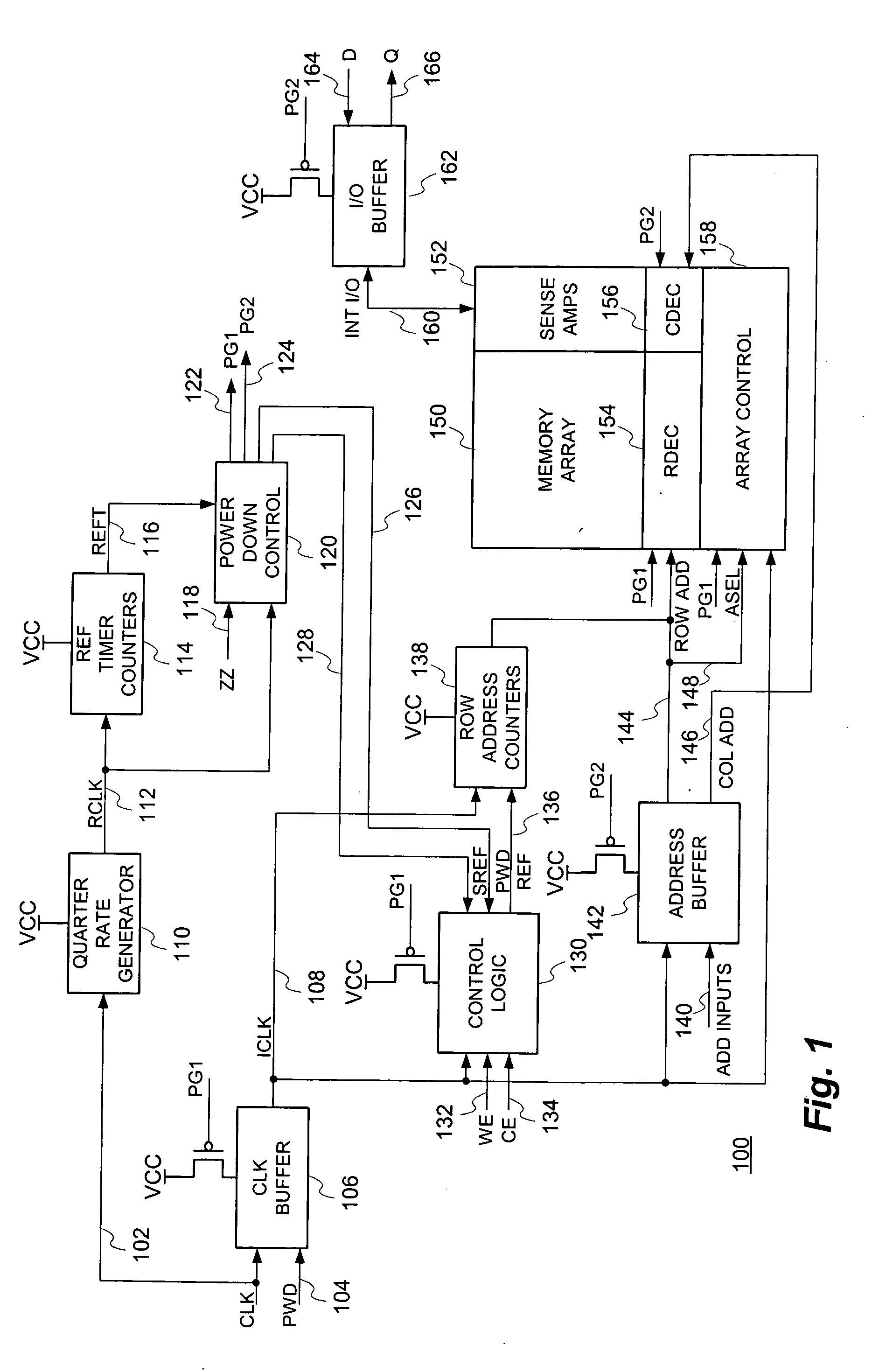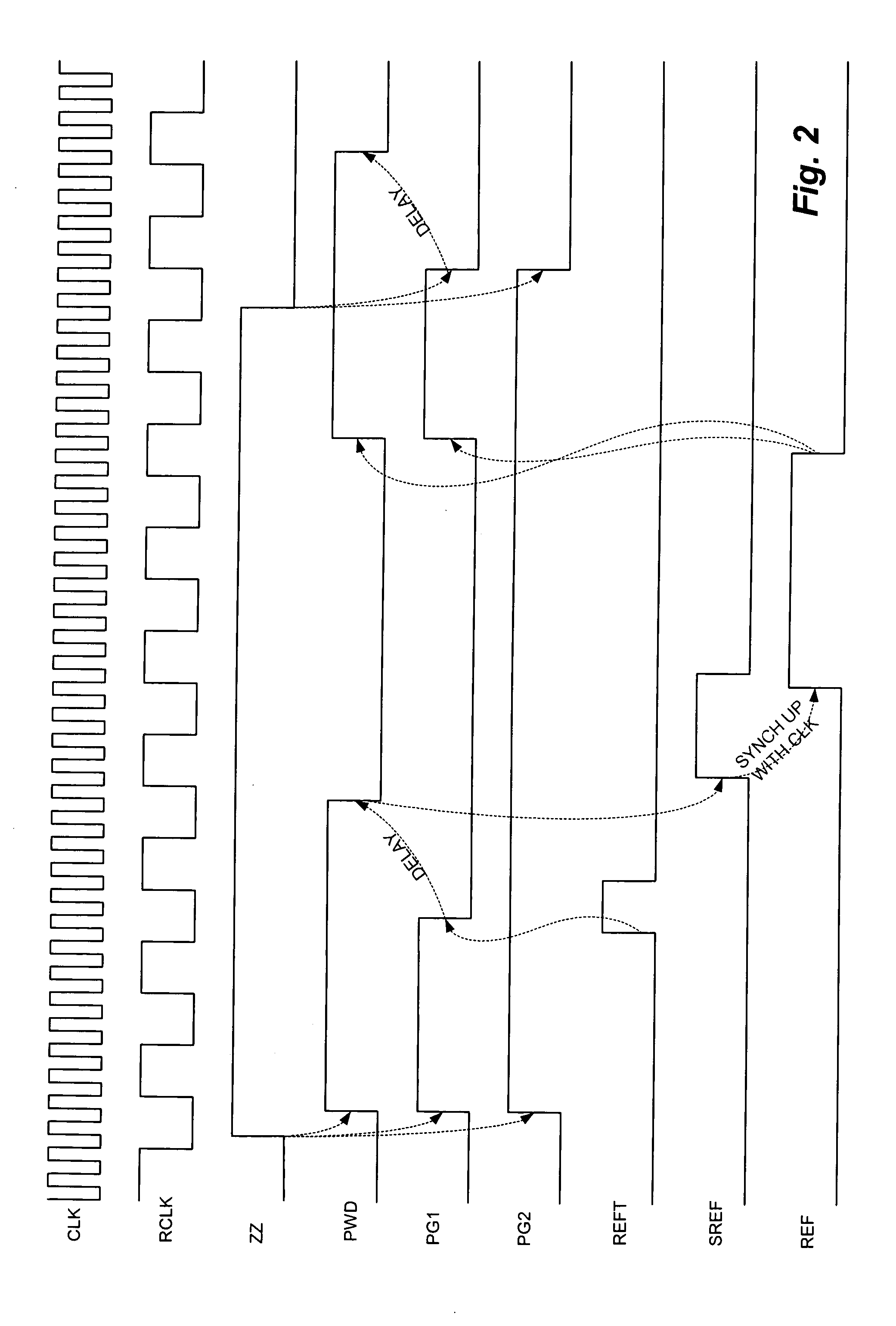Low power sleep mode operation technique for dynamic random access memory (DRAM) devices and integrated circuit devices incorporating embedded DRAM
a dynamic random access memory and low power sleep mode technology, applied in static storage, information storage, digital storage, etc., can solve the problems of not accurately timed when a refresh operation is required over all possible process corners, voltage and temperature, and not sufficiently reducing the transistor leakage power in all circuit blocks, so as to reduce the overall dram power usage, reduce transistor leakage, and reduce the effect of transistor leakag
- Summary
- Abstract
- Description
- Claims
- Application Information
AI Technical Summary
Benefits of technology
Problems solved by technology
Method used
Image
Examples
Embodiment Construction
[0020] With reference now to FIG. 1, a functional block diagram of a portion of an integrated circuit device 100 incorporating a memory array and implementing a representative embodiment of the low power Sleep Mode operation technique of the present invention is shown. As will be used herein, the following definitions pertain:
[0021] ClK—the externally applied clock to the embedded DRAM or memory device;
[0022] RCLK—the reduced rate clock which may be ¼th, ⅛th, 1 / 16th or other fraction of the externally applied CLK signal;
[0023] ZZ—the externally applied Sleep Mode command;
[0024] PWD—the power down, enable / disable signal to turn “off” various circuit blocks;
[0025] PG1—the power-gate #1 signal which turns “on” and “off” as required;
[0026] PG2—the power-gate #2 signal which remains “off” for the entire Sleep Mode time;
[0027] REFT—the refresh timer signal which goes “high” when a refresh operation is needed;
[0028] SREF—the start refresh signal which is asserted after the REFT, PG...
PUM
 Login to View More
Login to View More Abstract
Description
Claims
Application Information
 Login to View More
Login to View More - R&D
- Intellectual Property
- Life Sciences
- Materials
- Tech Scout
- Unparalleled Data Quality
- Higher Quality Content
- 60% Fewer Hallucinations
Browse by: Latest US Patents, China's latest patents, Technical Efficacy Thesaurus, Application Domain, Technology Topic, Popular Technical Reports.
© 2025 PatSnap. All rights reserved.Legal|Privacy policy|Modern Slavery Act Transparency Statement|Sitemap|About US| Contact US: help@patsnap.com



